If you are new to electric vehicles, the naming of hybrid and full EV’s can be confusing. For that matter, if you are not new to electric vehicles, the naming of hybrid and full EV’s can be confusing. I recently had a discussion with two Tesla owners who had no idea what a Mild Hybrid was.
To make this even more confusing many auto manufacturers make a gas, hybrid, PHEV and/or BEV versions of the same car! For instance the Kia Niro has a Hybrid, Plugin Hybrid and Fully Electric BEV version.
To help clear this up, below are simple definitions and examples of all the different types of vehicle electrification that are available in 2020:
What is an EV?
EV stands for Electric Vehicle. The EV category include Hybrids, BEV’s, Hydrogen vehicles and more, which we explain in simple terms below.
If you are keen to know what EV’s are coming in 2021 that real people can buy, take look at our article “40 EV’s You Can Afford in 2021”
What is a Hybrid? (aka: HEV, eAssist and PowerBoost )
Hybrid means the vehicle has both a traditional gas or diesel engine AND a electric/battery drive system but does NOT have a plugin. Hybrid Electric Vehicles (HEV) look like any other car, in fact most of them are just gas/diesel powered vehicles with an electric drive motor bolted on under the hood and a very small battery hidden in the floor of the trunk or behind the back seats.
As you can see in this photo of the 2020 Hyundai Sonata HEV below, hybrids like nearly all electrified vehicles use bright orange power cables and cast aluminum motor covers:
Ford brands their hybrid system as ‘PowerBoost‘ when it is on their big trucks but just uses the word Hybrid on its SUV’s and sedans. GM markets its hybrids as having ‘eAssist’
Typically hybrid cars and trucks will only propel the vehicle using the electric drive for a very short distance (i.e. a quarter mile from a stop light or while coasting) before the gas/diesel engine kicks in. Hybrids are great for stop and start traffic situations but offer no benefit with driving on the highway.
Hybrids only charge their battery from the surplus electricity generated by the gas engine. If you want to truly, “charge” your hybrid you need a PHEV.
What is a Mild Hybrid? (aka: eTorque and Micro Hybrid)
A mild hybrid is just a hybrid with a particularly small battery. It is a hair splitting exercise to argue the precise definition of Hybrid compared to Mild Hybrid. Many companies have offered mild hybrids including the Chevy Malibu Hybrid, Toyota Corolla Hybrid and the VW Golf Hybrid.
FCA’s RAM and Jeep brands offer mild hybrid options even on their big 8 cylinder engines using the name “eTorque“. It has a tiny battery tucked in behind the rear seat. This give the vehicle the ability to turn off the gas/diesel engine at stop lights and while mostly coasting down hill or to a stop. It also allows for some additional power boots on take off if the driver ‘floors it’.
What is a PHEV?
PHEV stands for Plugin Hybrid Electric Vehicle and they are just hybrid vehicles with bigger batteries and a plugin so they can take electricity from any outlet and from specialized charging stations. Regular hybrids, can’t be plugged in, so a PHEV is the best option for many consumers with normal commuter patterns.
A typical PHEV will have a battery that will store enough electricity to drive the vehicle between 25 and 75 kilometers (15 to 50 miles) and that is what most commuters need to get to and/or from work. After the battery is drained, the gas/diesel engine turns on seemlessly and depending on the model of car:
- may create electricity to power the electric drive train (so it is just a generator), or
- may connect directly to the transmission to propel the vehicle like any other gas/diesel vehicle
In my case, I charge at work for free and I have a small 110v charger that came with my PHEV’s for home use. Personally I have owned:
- a Ford CMax Plugin Hybrid which provided 30 kilometers (20 miles) of all electric range
- two Cadillac ELR Plugin Hybrids which provided 75 kilometers (50 miles) of all electric range
If you were to lift the hood of any PHEV it would look just like the 2020 Hyundai Sonata Hybrid shown in our Hybrid section above. You would see orange cables and shiny cast aluminum parts beside a gas engine. The battery of a PHEV is too large to hide so manufacturers usually chew up a substantial percentage of your trunk space with it.
Like regular hybrids, PHEV’s collect waist electricity from the gas engine but also can be charged from the wall.
Criticisms of PHEV’s is that they have complex drive systems and while this is true that is not a problem for consumers. Nearly all PHEV’s come with an 8 year 160,000 kilometer (100,000 miles) bumper to bumper warranty on the PHEV parts and labor including the battery. This means any technical issues are taken care of by the manufacturer. Some companies Mitsubishi warrant their PHEV parts for 10 years.
What is a BEV?
BEV is the acronym for Battery Electric Vehicle. BEV’s have no gas/diesel engine. They are propelled only by electric motor(s) running from batteries that were charged from the wall or speciallized fast chargers. BEV’s are true electric cars and under the front hood, is… nothing but an empty space and some plastic covering small electric motors.
Typically BEV’s have ranges from 325 to 600 kilometers (200 to 375 miles), but there are lots of exceptions. For instance, Ford just annouced their new full size Transit van has a 200 kilometer (120 mile) range which is ideal for 98% of in-city workers. On the other end of the spectrum, Mercedes announced their new S class flagship will have a 700 kilometer (435 mile) range.
From a manufacturers perspective, the ig advantage of BEV’s is that they have about 30% fewer parts and require an assembly line about 30% shorter than a traditional gas/diesel/hybrid/PHEV factory.
In addition to rapidly improving engineering and to Elon Musks enormous hype, one of the biggest reasons Tesla has been so successful compared to traditional car companies is because they only produce BEV’s so their assembly lines are fully optimized for them, saving hundreds of millions of dollars.
What is an ICE Vehicle?
ICE stands for Internal Combustion Engine. This is your old school gas/diesel powered vehicle. The only thing interesting about ICE is that they continue to improve their efficiency and are required for hybrids and plug-in hybrids. ‘nough said.
What is a FCEV?
FCEV is the acronym for Fuel Cell Electric Vehicle and what that means is a Hydrogen powered vehicle. Traditional “Full Electric” vehicles need to store their energy in a battery where as Hydrogen FCEV’s produce their own electricity on the fly. Conceptually FCEV’s are like regular gas/diesel engined vehicles in that they PRODUCE power.
They joke about hydrogen is that is has been “next years technology for 25 years”. Hydrogen is was very expensive and very ‘dirty’ to produce because it was made by splitting natural gas molecules. Today however companies like Calgary’s Proton Technologies can produce H2 at 10% of the cost and 0% of the polution. This makes Hydrogen a real competitor in the EV space in the not so distant future.
Because FCEV’s need filling stations to be as readily available as todays gas stations, Hydrogen powered vehicles will most likely be viable:
- in dense urban area’s like California
- along super highways that are used mostly by large freight companies like UPS, JB Hunt and Knight-Swift.
A few companies like FedEx that operate both in major cities and along major highways are going to be the biggest beneficiary of any transition to FCEV’s.
What is a Skateboard Vehicle?
This one is for bonus points. Nearly all vehicles today have an gas or diesel engine under the hood and a gas tank under the trunk. That works because you need to keep the fuel physically distant from the hot engine. That is not the case for electric vehicles; the battery and motor(s) can safely be stored side by side so designers have found that the least cost method of EV of assembly is to put the batteries in a flat pack located under the seats and between the wheels… like a skateboard… get it?
What is a Top Hat?
What goes on top of the skateboard (batteries and electric motors) is a vehicles cabin and body which designers call a “top hat”. Auto manufacturers like GM, Ford and Mercedes can easily attach different top hats to the EV powertrain skateboard. The difference between an SUV and car is about 1″ of wheel clearance and the shape of the body so why not use the exact same underpinnings to keep costs down.
This one is a cargo van and that one is an SUV and that one over there is a sedan… but all driving on the same electric “skateboard” platform:
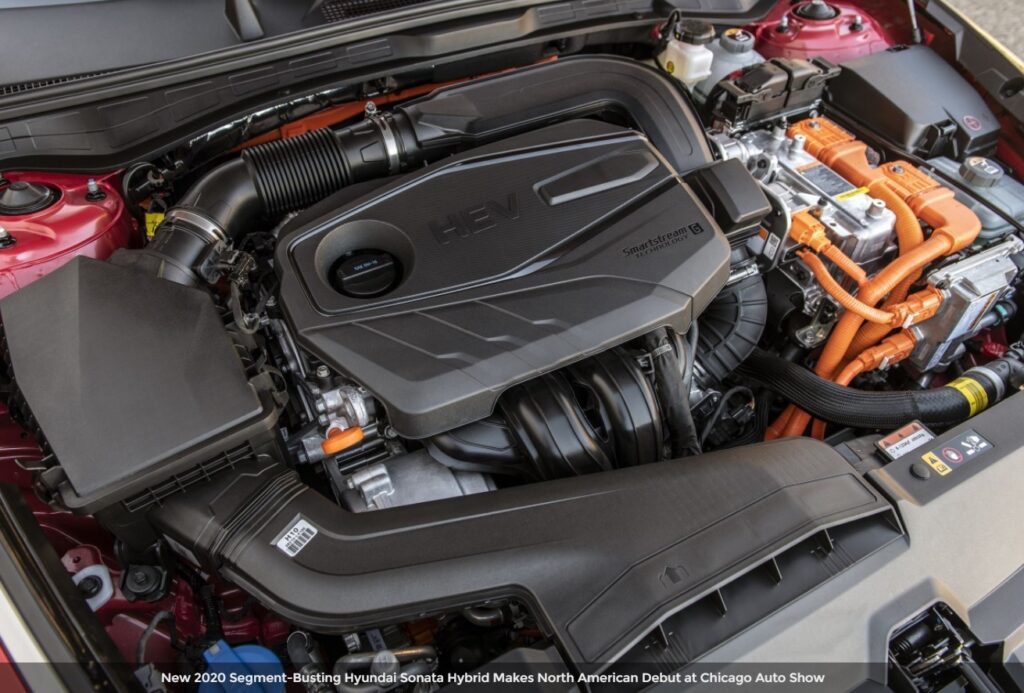
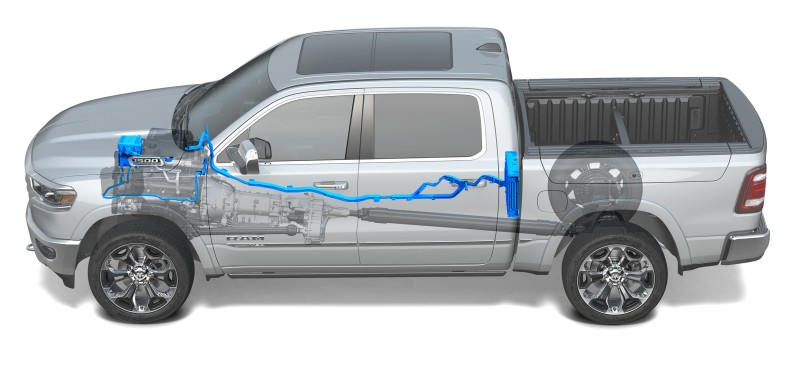
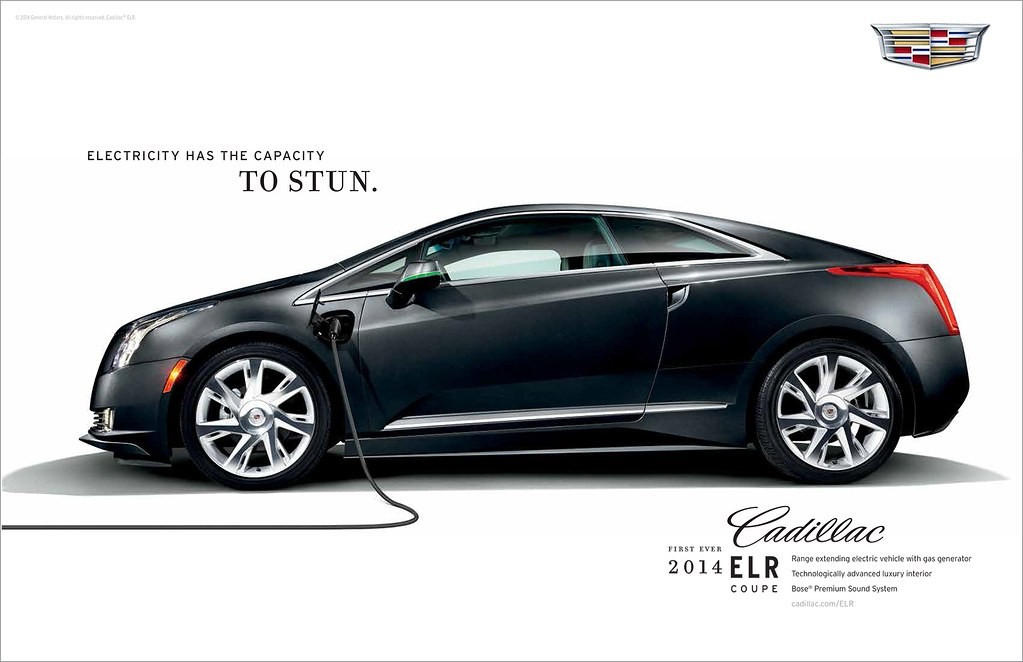
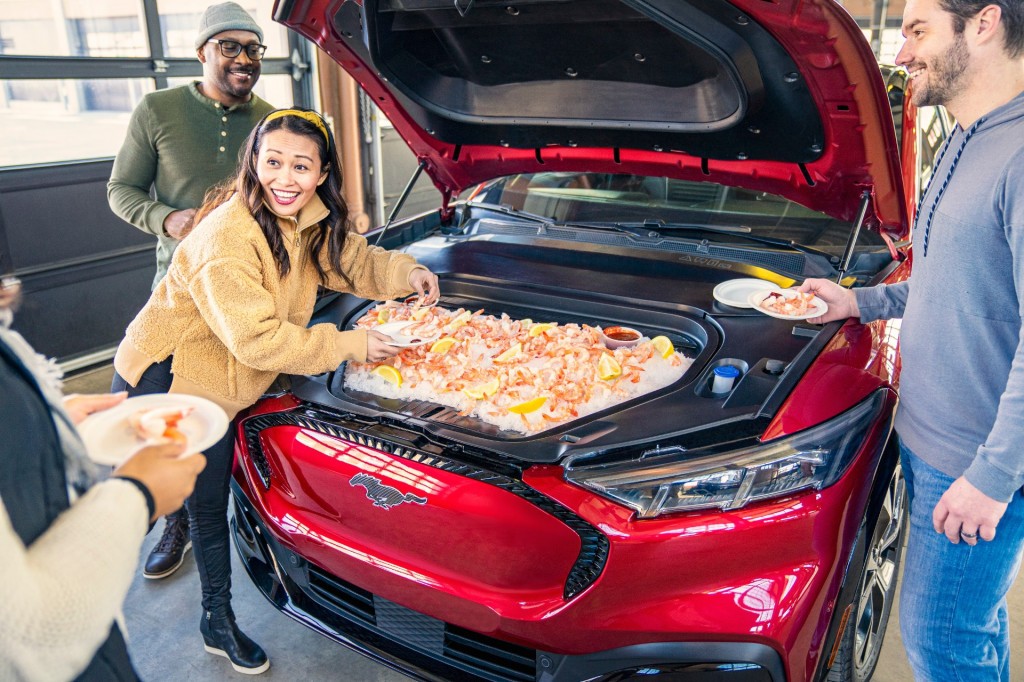
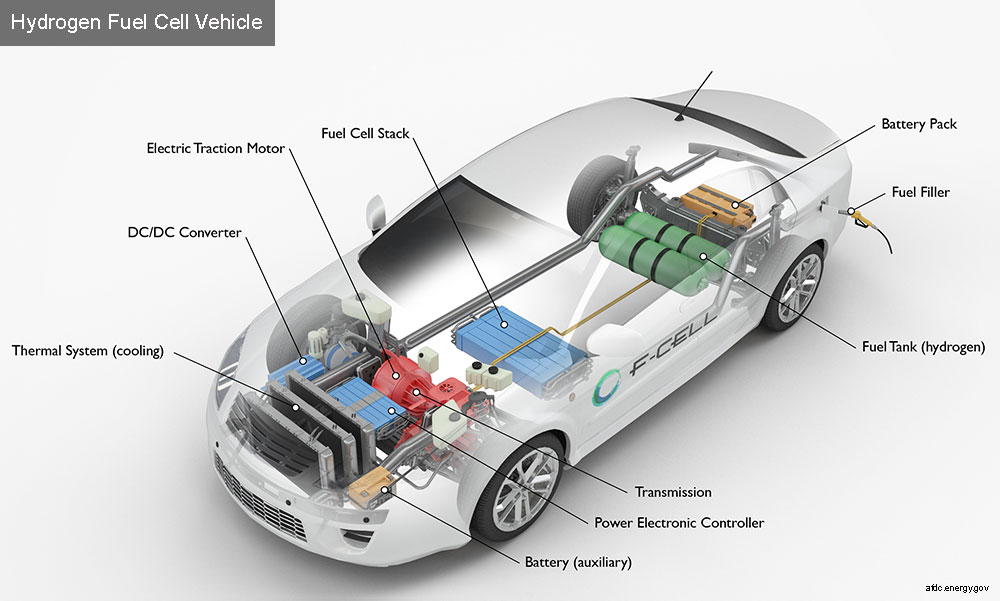
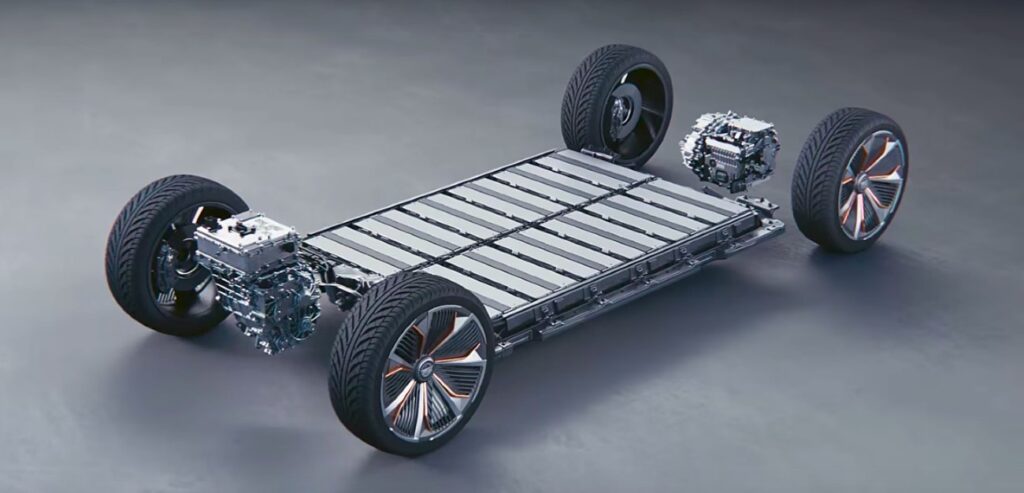
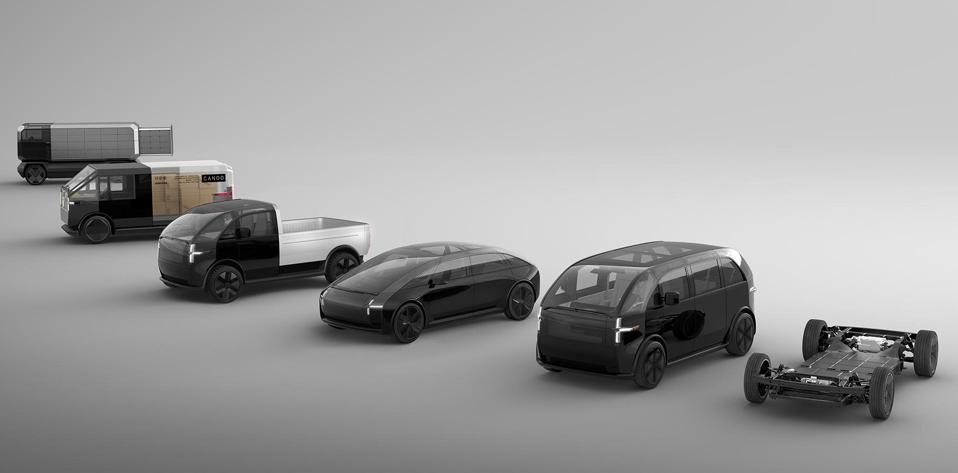
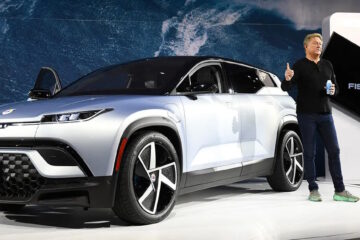
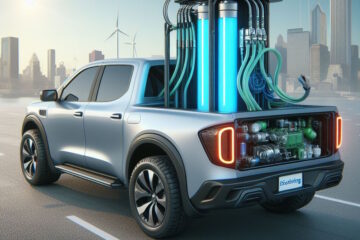
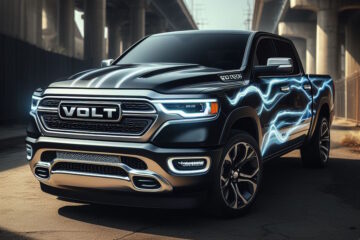
3 Comments
Kayswell · June 19, 2021 at 2:16 pm
Thanks for revealing your ideas. I would also like to mention that EV’s are actually evolving. Modern technology and inventions have made it easier to create EV’s.
Tesla Training Video Shorts – Partisan Issues · January 19, 2021 at 5:08 pm
[…] you have a Tesla EV or are thinking about buying one, you may want to learn about how they operate. Tesla does not do […]
Shockingly Low Hydrogen Vehicle Sales Numbers, Make Officials Look Bad – IssuesLab.com · March 30, 2024 at 12:20 am
[…] safe to say that no-one who is remotely informed about the facts would argue that EV’s (battery electric vehicles {BEV}, plug-in hybrid electric vehicles {PHEV}) are selling well in Canada, the repeated inclusion of hydrogen vehicles in these bullish […]